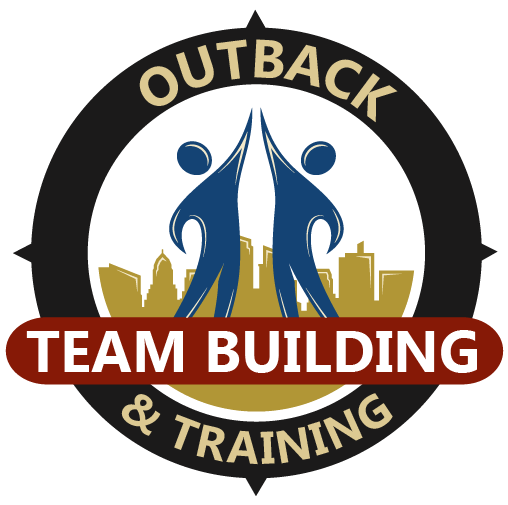By helping your employees learn to improve their critical thinking skills in the workplace, you can empower your team to drive both their own careers and your business forward. Find out four ways to foster out-of-the-box thinking and problem solving at the office.

By helping your employees learn to improve their critical thinking skills in the workplace, you can empower your team to drive both their own careers and your business forward. Find out four ways to foster out-of-the-box thinking and problem solving at the office.
As a leader, it may feel like your employees come to you with every small issue, even though you know they’re capable of bringing forward creative solutions and exercising critical thinking in the workplace. This may leave you feeling a bit stumped. You know you have a stellar team. So, why aren't they showcasing this valuable skill?
There are several reasons why your team may not be utilizing critical thinking, including:
- Lack of Confidence: Employees may be unwilling to make decisions for fear of failure or making a mistake.
- Laziness: The path of least resistance – and asking someone else to tackle a problem – is always going to be easier.
- Unclear Expectations: Your team may feel uncertain about their position and accountabilities.
- Avoidance of Conflict: Challenging established processes can ruffle feathers and make people uncomfortable.
- Uncompromising Bias: Team members may not be able to recognize that other people could have perspectives that are different from their own.
Regardless of why your employees are troubling you with each issue they face, you know something’s got to give.
It’s time to empower your team to think critically on their own, so that they can bring you results, rather than roadblocks.
2 Big Reasons Critical Thinking Is So Valuable in the Workplace
Having an employee who will fulfill any task exactly as you asked is good. Mentoring a team member who will challenge a process that’s not working, bring you innovative solutions, and see an assignment from different viewpoints is much better.
Critical thinking in the workplace is an invaluable skill that should be on your leadership team’s radar from the time you hire, through to how you manage your employees. And for many, it already is.
In fact, two major reasons critical thinking seems to be so valuable in the workplace is due to simple supply and demand:
- Decreasing Supply of Critical Thinkers: SHRM reports in the 2019 State of the Workplace that problem solving and critical thinking is the number one soft skill missing among workforce applicants. It’s a skill gap that remains prevalent, with more than 50% of survey respondents stating that this sought-after competency is actually declining within their organizations.
- Increasing Demand for Critical Thinkers: According to the Future of Jobs Survey 2018 by World Economic Forum, critical thinking in the workplace was third on a list of top 10 in-demand skills in 2018 and it is trending to still be on that list in 2022.
5 Examples of Critical Thinking in the Workplace
When you imagine critical thinking, what do you think of? Perhaps you envision someone concentrating hard at their desk. Or maybe you conjure up a cartoon businessperson with a thought bubble bursting from their head.
Whatever it is, it’s likely not a concrete example of someone “thinking critically.” It’s a complex idea and can be tricky to spot in real-world business situations.
So, to help paint a picture of what critical thinking in the workplace looks like, here are five examples:
- Prioritizing a Task List: Given a list of assignments, an employee with well-developed critical thinking skills is able to assess the items and prioritize the order of completion by analyzing the importance of each task and the overall big picture.
- Recommending Team Building Activities: When a customer calls our team at Outback with their details, such as group size, goals, and location, our Employee Engagement Consultants are able to evaluate that information and cross reference it with our team building activities to provide the best recommendation.
- Hiring New Employees: In an interview setting, HR and leadership teams are able to interact with job candidates and assess who will be best for a position based on skills, experience, recommendations, and culture fit.
- Limiting Damage: If a pipe bursts in your office building, the maintenance worker in charge of handling the issue would assess how their actions may affect other areas. Turning off the water may seem like the obvious solution, but they would first evaluate if that would impact other water lines and areas of the building before making any decisions.
- Effectively Communicating Change: Understanding that a change in organizational processes may inadvertently affect employees or departments, a critical thinker would discuss the proposed improvements with others to get their input or advice. Once they’ve moved forward with any updates, they would then communicate the changes to ensure there are no gaps in the new process. Read our blog post, Strategies for Companies to Successfully Overcome Major Organizational Changes, for more advice on this topic.
How to Promote Critical Thinking on Your Team
Critical thinking in the workplace can help you create a stronger, more innovative team and free up your time as a manager – but this soft skill can be a tricky one to teach. So, how can you help your employees hone the ability to be critical thinkers?
There are varying opinions on exactly which competencies define “critical thinking.” But here are the four most common abilities that our team recommends supporting in order to promote critical thinking in your workplace.
- Analysis & Evaluation: When approaching a roadblock, encourage your team to look at the overall big picture and look for potential solutions. Tell them to ask themselves how their actions may affect other people or areas of your business and to look at the issue from multiple perspectives. Who benefits? What will the impact be? Then get them comfortable with bringing their ideas, and the rationale behind them, forward. Take the time to sit down with your employees and discuss their recommendations, whether they should move forward with them, and, if not, what courses of action should be taken instead and why.
- An Open Mind & Creativity: Empower your employees to approach tasks with a neutral opinion. Once someone has evaluated a situation, ask them to question what they may have missed. They should look for ways they could be wrong and know that identifying gaps in their knowledge is not a weakness – it's an opportunity to learn and get creative. Team building activities are a great way to help support your team’s creative energy and encourage them to see challenges from new perspectives.
- Confident Decision Making: Tell your team that you want them to come to informed conclusions on their own. Let them know you will value their input – even if it challenges a long-standing process – as long as they come to a decision after thoughtfully analyzing a situation with an open mind. With our Confident Decision Making training and development program, you can help your employees make hard business choices more effectively.
- Clear Communication: Motivate your team to communicate relevant issues, ideas, and resolutions throughout their process – without bogging you down with the nitty-gritty details. Standard practice for your employees should be to include all relevant people in their communications, so they can gather different perspectives and make decisions with the big picture in mind. If your group is having trouble with being effective communicators, our team recommends taking part in the Clear Communication program.
Learn More About Training & Development for Your Group
For more information about how training and development programs can benefit your group and support their critical thinking skills, reach out to our Employee Engagement Consultants.


